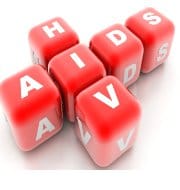HIV Self-Testing Initiative in Mizoram
Recent studies reveal breakthrough in HIV testing among young people in Mizoram. The state has the highest HIV prevalence in India. A collaborative study by the Indian Council of Medical Research-National Institute of Translational Virology and AIDS Research and Mizoram University marks the effectiveness of HIV self-testing. This approach has empowered many young individuals to get tested for the first time in a private and stigma-free environment.
About HIV
- HIV, or human immunodeficiency virus, attacks the immune system.
- If untreated, it can progress to AIDS, a severe condition.
- HIV is primarily transmitted through infected body fluids. Common routes include sexual contact and sharing contaminated needles.
HIV Prevalence in Mizoram
Mizoram has an alarming HIV prevalence rate. Approximately 2.73% of adults in the state are infected, which is higher than the national average. The state ranks first in India for HIV prevalence, especially among high-risk groups. Notably, 19.8% of injecting drug users and 24.7% of female sex workers in Mizoram are infected with HIV.
The Need for Innovative Testing Solutions
The rising number of new infections in Mizoram prompted a need for innovative testing methods. Traditional testing approaches often failed to reach vulnerable populations. The study aimed to explore HIV self-testing as a means to increase testing accessibility and engagement among young people.
HIV Self-Testing Methodology
HIV self-testing allows individuals to collect their blood or saliva samples and interpret the results independently. This method has been adopted in 41 countries since 2016. However, India has yet to implement official guidelines for self-testing. The research team focused not just on distributing test kits but also on effective program implementation.
Community Engagement and Outreach
The study involved qualitative interviews with various stakeholders, including HIV program officials and community leaders. gathered from these interviews shaped strategic communication and community engagement efforts. Linkages were formed with local organisations, youth groups, and events to facilitate the distribution of self-test kits.
Impact of the Self-Testing Initiative
The implementation of HIV self-testing in Aizawl led to 2,101 youths coming forward for testing within six months. Notably, 1,772 of these individuals were first-time testers. Among those who tested positive, 85% pursued confirmatory tests and were linked to antiretroviral therapy. This success demonstrates the effectiveness of self-testing compared to traditional awareness campaigns.
Future Implications
The study suggests that the HIV self-testing model can be replicated in other states facing similar challenges. Early detection through self-testing is crucial for timely treatment and management of HIV. The findings highlight the importance of innovative approaches in addressing public health issues.
Month: Current Affairs - February, 2025
Category: Health Current Affairs


